Meat Slicer Cleaning Guide
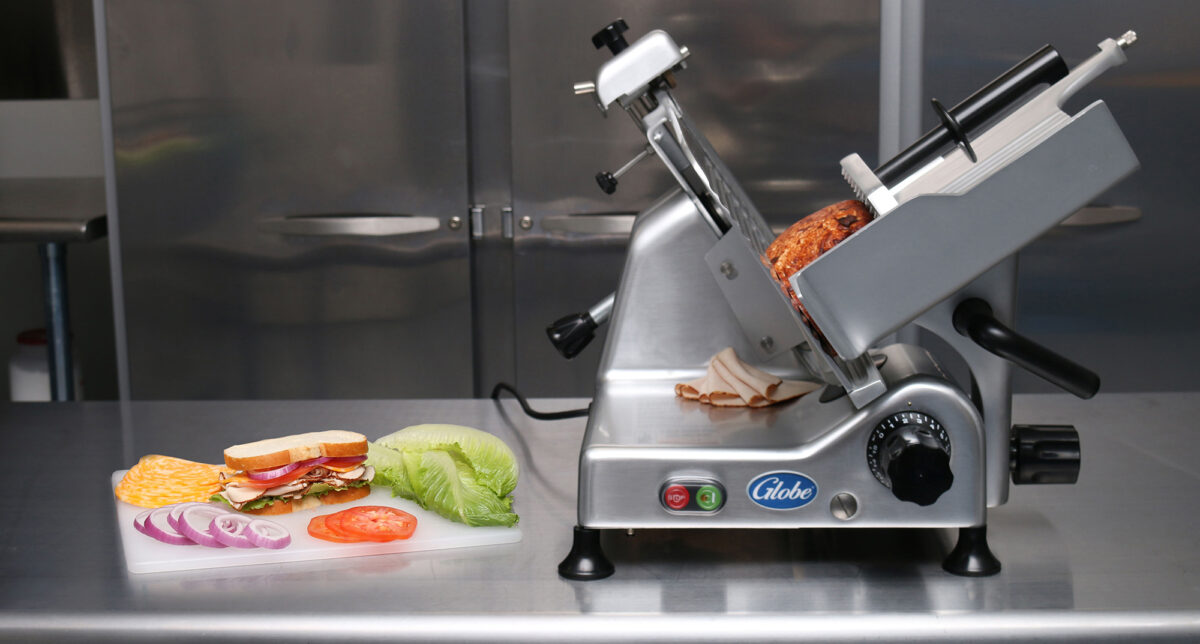
For freshness, consistency and pure deliciousness, a meat slicer is a key piece of equipment for butchers, delis and restaurants alike. And it’s not just meat a meat slicer can handle — bread, cheese, veggies and fruits can get the meat slicer treatment, too.
As with any surface that touches meat, cleaning a slicer is vitally important. Nobody wants their customers to get sick, and customers can get very sick indeed from equipment that harbors harmful bacteria.
At Eleven36, we are passionate about making sure you have the equipment that will elevate your kitchen — and that you know how to take care of it so that it lasts as long as possible. So without further ado, let’s get into how to clean a meat slicer!
Why Learning How to Clean a Meat Slicer is So Important
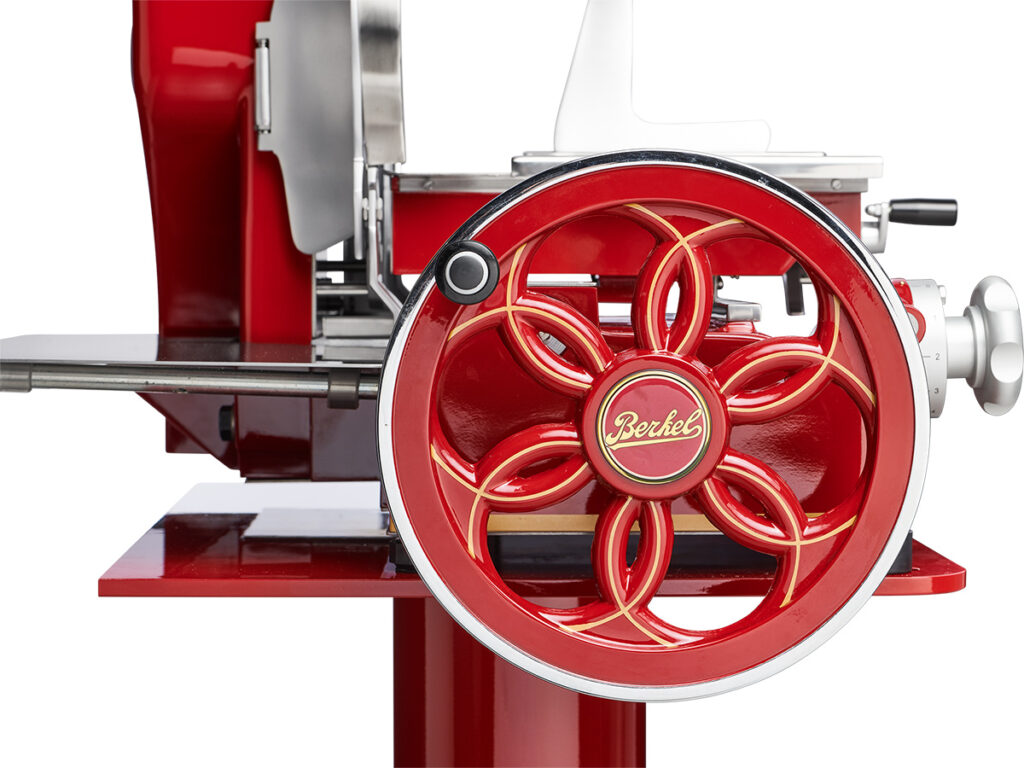
As with all Eleven36 products, we only sell brands we know firsthand our customers can rely on. But with meat slicers especially, cleaning and proper maintenance are important. Tiny pieces of food can get stuck in various parts of the slicer, allowing bacteria to grow. Having food or grease stuck in the machine can also degrade the slicer itself and make it progressively harder to safely clean or even use. The best case scenario with an unsanitary meat slicer is that you realize too late it isn’t clean and you throw food away. The worst case is that you serve food riddled with bacteria — potentially shutting down your business and making customers gravely ill.
The FDA has actually developed guidelines for cleaning your meat slicer — you must clean AND sanitize it at least once every four hours. There’s no wiggle room here! They have even developed handy flyers and posters you can put near the slicer to remind staff of what to look for in cleaning.
After using a meat slicer you should clean it immediately following FDA guidelines and machine instructions. After using a meat slicer on one type of product, you must also clean it and sanitize it before switching to another (like switching between meats and cheese, for example). And you should clean the meat slicer between employee shifts and at the end of each day. Aside from stopping the spread of bacteria, this frequent cleaning has added benefits in terms of being able to identify any wear or tear that must be addressed.
The idea of taking apart and cleaning a meat slicer with a giant, sharp blade could be a little intimidating, but once you get the hang of it, it will be a breeze. Plus, the high-quality meat slicers carried by us at Eleven36 have special features and tools to make the process of removing the blade safe and easy.
Before you get started, make sure you have everything you need on hand. Put on cut-proof gloves and make sure you have a gentle scrub pad. Grab your food-grade sanitizing solution, degreaser, dish soap and some paper towels. And have your instructions on hand — each meat slicer cleaning protocol is a little different.
How to Clean a Meat Slicer: A Handy Step-by-Step Guide
The first step is to have your instructions on-hand and follow to a T how the manufacturer wants you to safely disassemble and clean components.
Before cleaning and sanitizing a meat slicer every four hours, make sure you have a 1:1 hot water and soap solution on hand. Also make sure you have a scrub pad that is gentle — steel wool will be abrasive to your equipment and create new places for bacteria to hide.
Ok, time to clean:
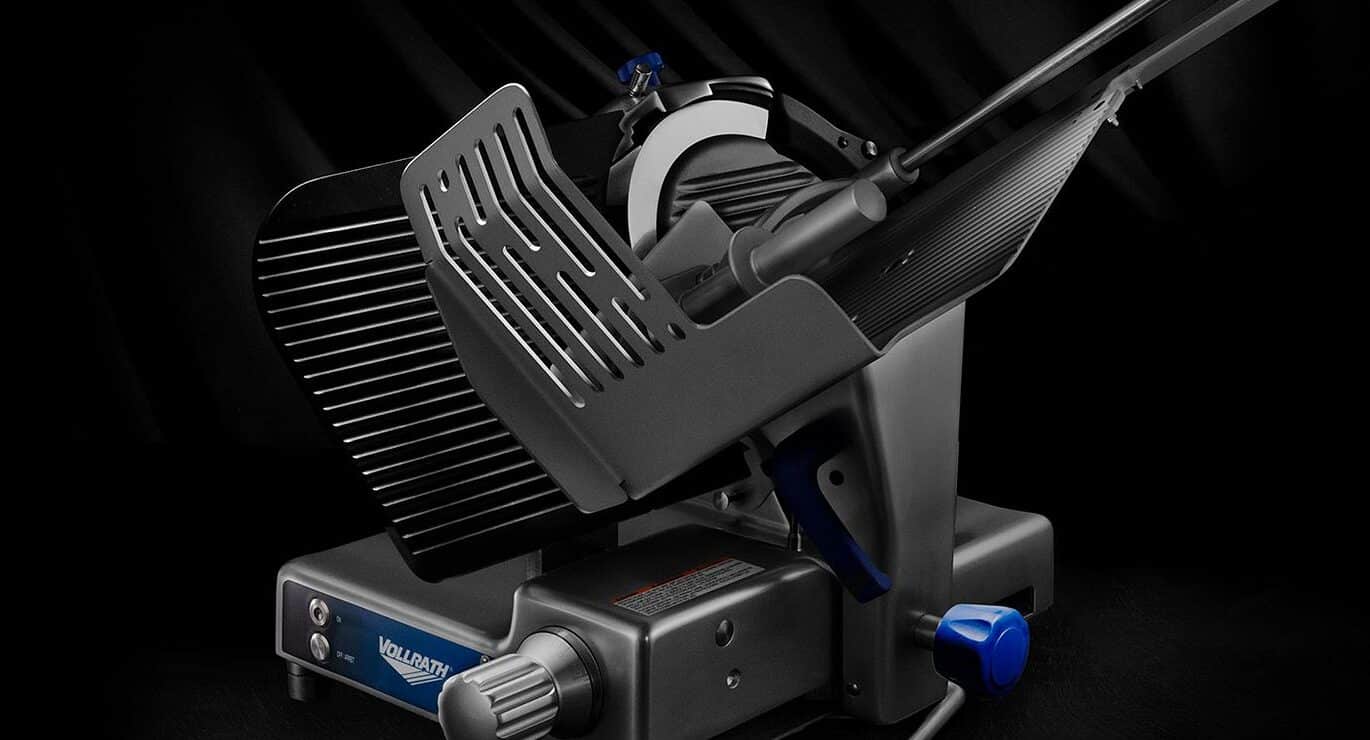
- Get started by setting your thickness to zero on the slicer. As the blade moves, gently and carefully wipe a scrub pad to remove any large food particles. Once this is done, unplug the machine.
- Ensure your gauge plate is closed and the sharpening stone that comes with your meat slicer is out of the way before disassembling parts of the machine. The components you will have to remove and take apart include the center plate, the product tray and the slice deflector. Wash these separately in hot water and soap (or in the dishwasher at the end of the day if the manufacturer suggests that). Then sanitize with a food-grade sanitizer spray or wipe.
- Clean the blade with the soap and hot water solution — you can either leave it in place or take it off the slicer. Clean it very carefully, moving from the center outward. You can also use degreaser spray for a very greasy blade.
- Clean and wipe the rest of the slicer as well, checking the nooks and crannies, gaskets and seams. Rinse with hot water, then wipe with a clean towel.
- Now, you need to sanitize the machine — use a food-grade sanitizing spray to get to all parts of the machine. Coat the meat slicer thoroughly, and allow it to air dry (you are not allowed to rinse the sanitizer off the machine, per federal instructions).
- While the unit is drying, use food-safe lubricant to maintain any rods or moving parts of the product. Once the machine is dry, you can restore the components you disassembled before, like the center plate, product tray and slice deflector. And you can get slicing again.
If a soft scrub pad is not enough for your slicer, invest in a soft brush that isn’t abrasive on the unit to help remove food particles. Or use a paper towel for bigger particles that may be stuck.
Another important tip? Make sure everything actually does dry — if any pieces need help, use a non-linting towel to clean them and a food-safe lubricant to make sure they do not rust.
Always have your machine serviced regularly according to manufacturer instructions, too.
Cleaning a meat slicer is serious business, which is why it helps to invest in a quality meat slicer that’s easy to clean and does not collect water or provide extra opportunities for bacteria to lurk. That’s why Eleven36 supports brands that produce and service machines with the highest quality, so that you and your customers are not left in the lurch.
Best Practices for Keeping Your Meat Slicer Slicin’
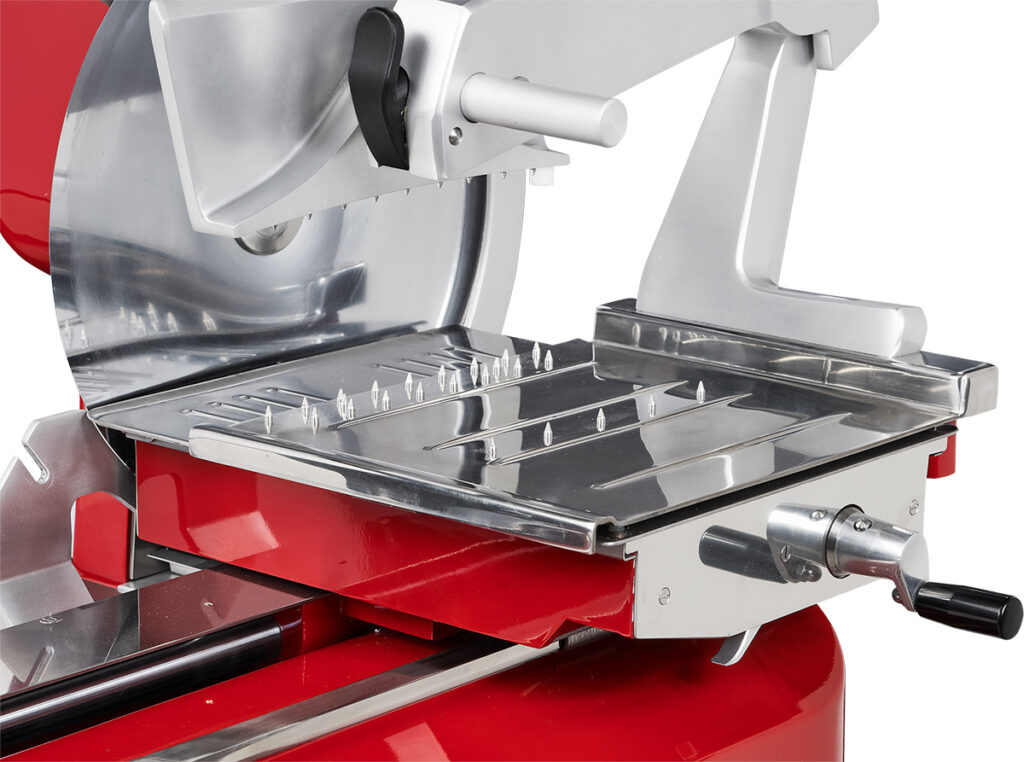
Once your meat slicer is clean, sanitized and dry, you can use it again. Hooray! But to really keep the meat slicer in good, clean condition, you will want to make sure you take a few extra steps. Make sure it is getting serviced by the manufacturer regularly so that the unit doesn’t lose any of its lifespan and so that any gaskets or elements that might wear down are quickly replaced. Perform an especially deep and vigorous cleaning and sanitization of all the parts of the meat slicer at the end of each day according to manufacturer’s instructions. Look in every nook and cranny — underneath any plastic pieces, on the handle, any place your hand might have touched, and even into the wells of metal components, gears and screws. Keep the parts of the meat slicer lubricated and store it somewhere cool, dry and covered, so that it isn’t exposed to dust or to mold or mildew.
Frustrated by a particular type of meat? For residue in which a soapy paper towel doesn’t work, you can use degreaser spray to help work away greasier meats. Or use a soft brush to dislodge stubborn meats.
Being sanitary and observant of all the places meat (and therefore, bacteria) can hide away will help your meat slicer continue to delight customers for years!
A Good Meat Slicer Makes Cleaning Easy
Quality food slicers like the kind carried by Eleven36 are built with safety and cleaning in mind. Carrying only brands you can trust, like Hobart and Globe, our meat slicers have a number of helpful features to keep your customers and business safe. Those features include stuff like:
- Extremely sharp blades that last longer than other models reduce food waste and the amount of material flying off or remaining on the slicer.
- Blade removal tools that keep your staff safe as they disassemble the meat slicer regularly.
- Smart design of the blade and components like a ring guard and knife cover so that cleaning the slicer is a piece of cake.
- Assistive tools to help clean under the slicer as well.
Budgeting a little extra for a meat slicer with added safety and cleaning-friendly features reduces frustration in the long run, ensures the meats and cheeses you are slicing are of the highest-quality, and means as little downtime as possible for your machine. It makes figuring out how to clean a meat slicer easy. It’s a wise investment!
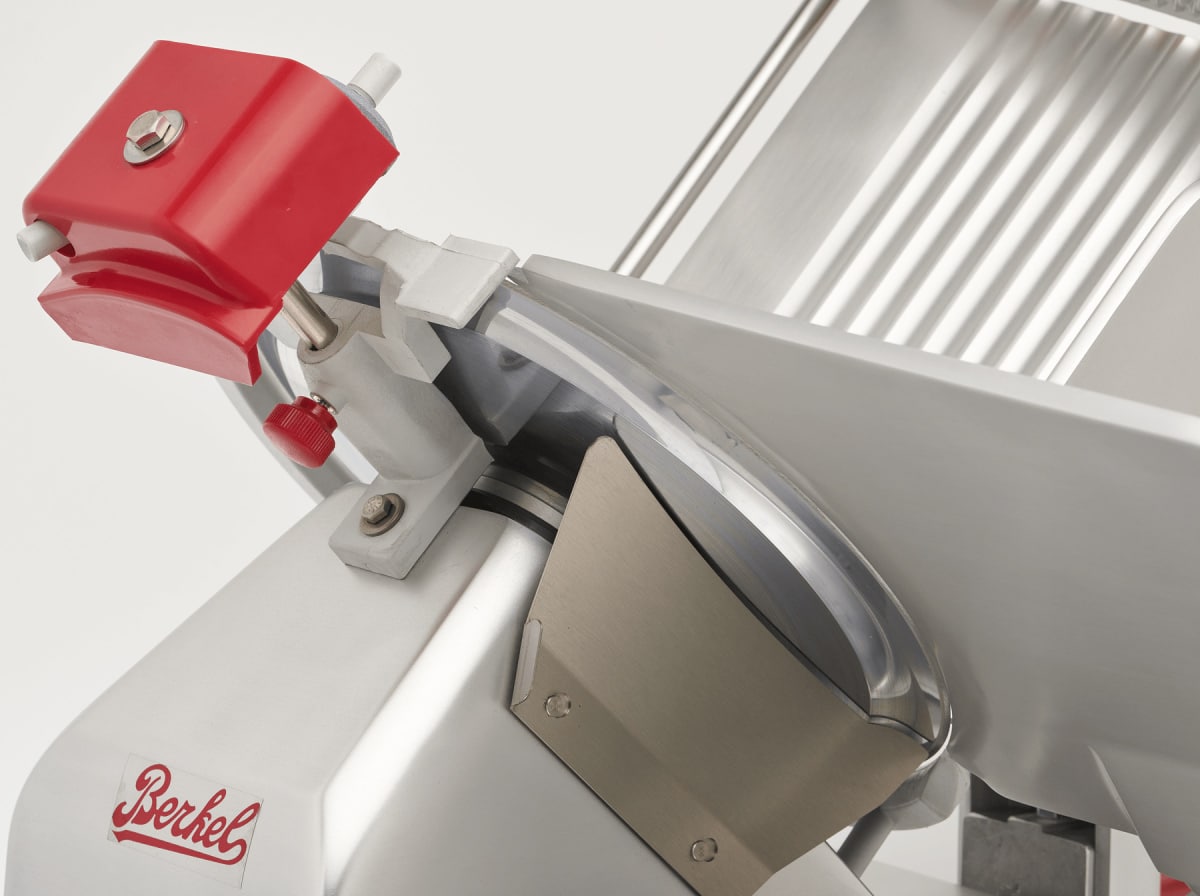
No matter what meat slicer you have, frequent cleaning and sanitizing is essential for the longevity of the machine and for your own business. Eleven36 is here for you for any questions you may have about how to do that effectively with the meat slicers we provide. We give you a head start by selling only high-quality pieces of equipment that are meant to reward your investment and make cleaning easy, with fewer parts to replace. Do your menu a favor by getting the right meat slicer for your business — the perfect slice of meat or cheese at the perfect thickness will keep a sandwich dancing in your customer’s dreams for life!
